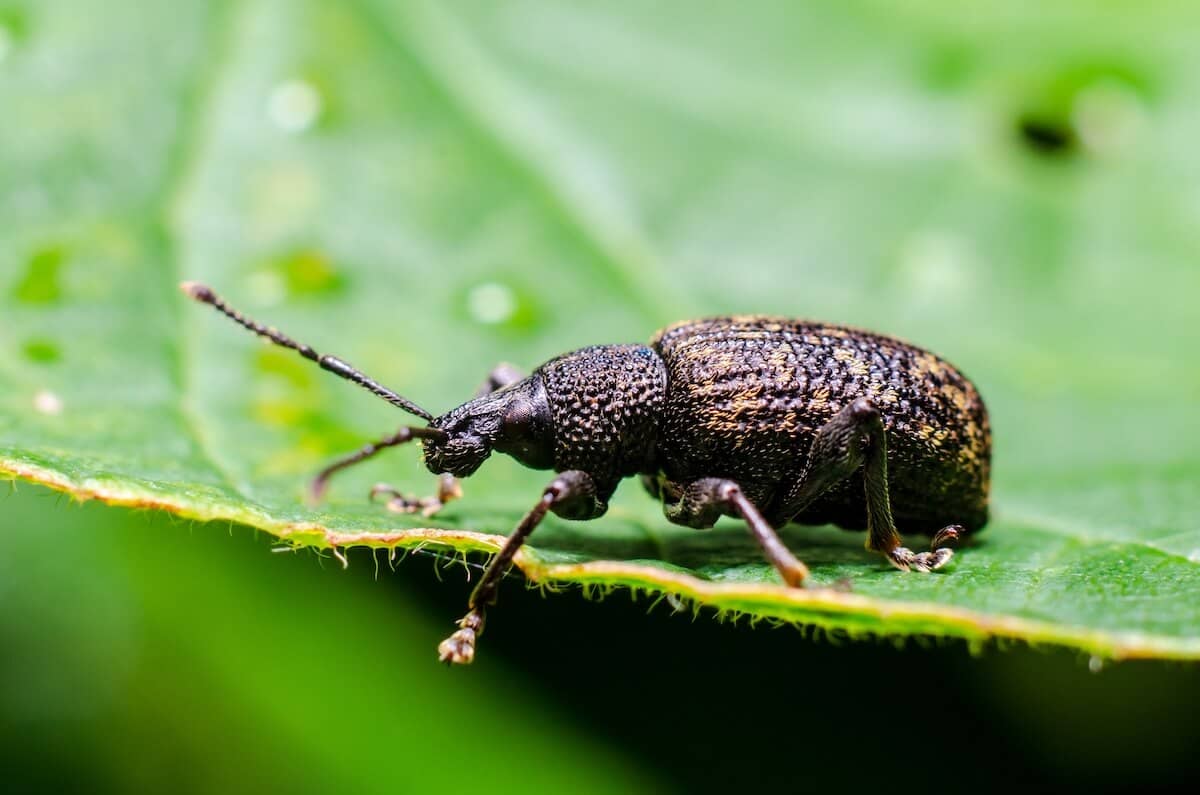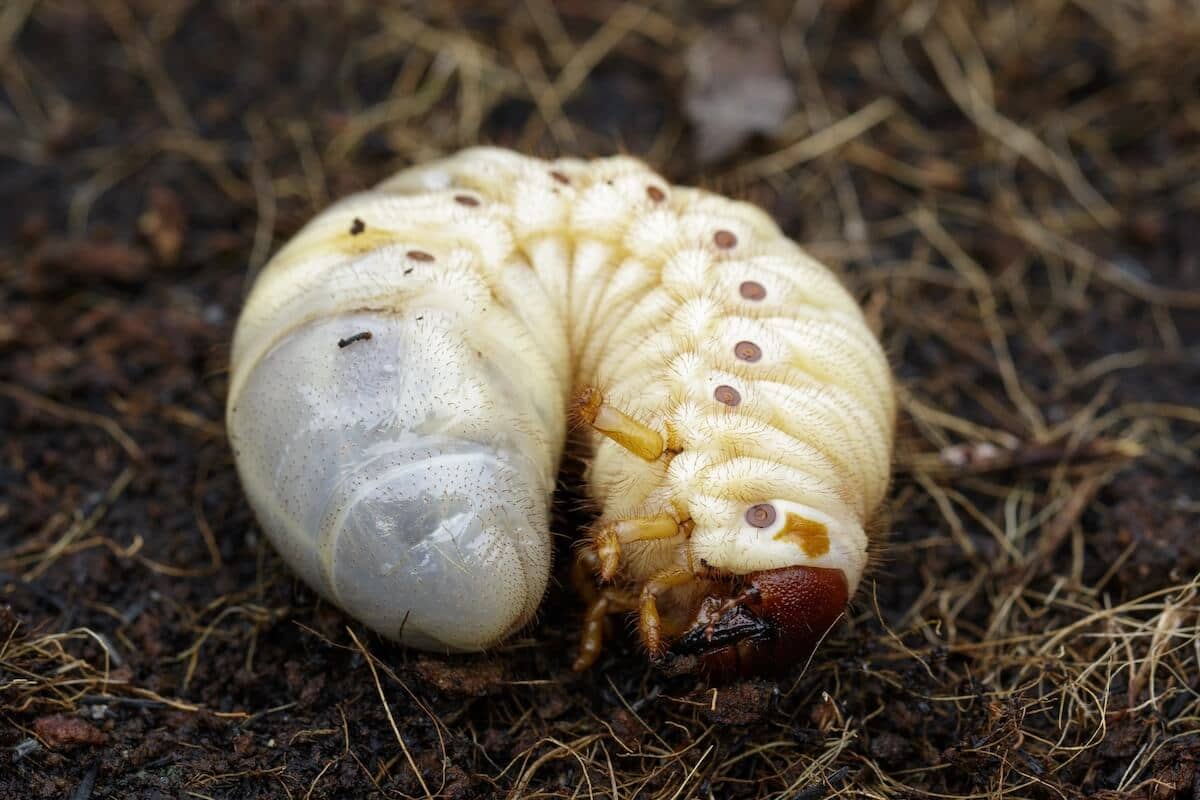How to Get Rid of Vine Weevils - A Gardener's Guide to Control
Vine weevils can be one of the most troublesome garden pests, posing a significant threat to your beloved plants. This article is worth reading for anyone attempting to protect their garden from the severe damage caused by these insects.
We’ll delve into their biology, symptoms of damage, and various effective control methods, including nematodes and biological controls. By understanding and identifying vine weevils, you can implement proactive measures to keep your garden healthy and thriving.
What are Vine Weevils?
Vine weevils belong to the family of beetles known as Curculionidae, which includes various species that damage shrubs and other plants. The two most common species gardeners may encounter are the black vine weevil and the Otiorhynchus sulcatus. Adult vine weevils are approximately 9mm long and are recognised for their elongated bodies and short snouts. They emerge primarily in the late spring and remain active throughout the summer.
This pest, which cannot fly, tends to thrive in moist conditions, making it a common menace in gardens, especially among potted plants. By mating and laying their eggs in the soil, adult females contribute to the growing population of vine weevil grubs, which are the larval stage of this pest.

How to Identify Vine Weevils
One of the most effective ways a gardener can manage vine weevil infestations is by correctly identifying these pests early. Please look for adults on your plants, primarily at night when they are most active. They tend to feed on the foliage, leaving unsightly notches along the edges of leaves.
If you notice irregular-shaped notches on the leaves of your plants, it could be a sign of a vine weevil infestation. Additionally, if you dig a little deeper into the soil surrounding the roots of your plants, you may find grubs. These grubs are legless, creamy-white insects with brown heads, and they can damage the roots of your plants. Catching these signs early can help manage the vine weevil population before it becomes severely damaging.
What Damage Do Vine Weevils Cause?
The damage caused by vine weevils can be pretty significant. Adult vine weevils primarily eat the leaves, leaving distinct notches that make plants look unsightly. However, the real danger lies in the vine weevil grubs, which feed on the roots of a wide range of plants.
This root feeding can lead to stunted growth and wilting; in severe cases, it may even result in plant death. If left unchecked, a damaging population of vine weevils can compromise the health of your garden. Early identification of the signs is crucial to preventing severe plant damage.
How to Get Rid of Adult Vine Weevils
To get rid of adult vine weevils, consider implementing several tactics. One proven method is to use insect barrier glue around the base of the pots or garden beds. This traps the adult females before they lay their eggs, significantly reducing the population. Another option is to hand-pick the adults at night when they are most active; simply remove them and discard them.
Maintaining a healthy garden environment is also essential. Keeping your garden well-watered but not overly moist can deter weevils, as they thrive in damp conditions. If infestations persist, consider consulting with garden centres or suppliers of biological controls to explore other effective treatments.
How to Control Vine Weevil Grubs
Effective control becomes paramount once you’ve identified the presence of vine weevil grubs. One of the most beneficial strategies for dealing with grubs involves using nematodes to kill the vine weevil. Nematodes are microscopic worms that specifically target and kill vine weevil larvae in the soil. They offer an organic solution to combating grubs.
When the larvae are active, applying nematodes in the spring and early summer can significantly reduce their numbers. For optimal results, ensure the soil temperature is warm enough, ideally above 5°C (41°F). Nematodes are an eco-friendly and effective solution for controlling vine weevils, thereby enhancing your garden’s health.

What Are Nematodes?
Nematodes are beneficial microscopic worms designed to target and eradicate vine weevil larvae. These nematodes infiltrate the grubs in the soil and kill them by releasing bacteria that disrupt their biological processes. This form of biological control is effective and environmentally friendly, making it an excellent choice for conscious gardeners seeking a safe and effective way to control vine weevils.
To use nematodes effectively, they should be purchased from a reputable supplier and applied according to the instructions. Their application should coincide with the lifecycle of the vine weevil larvae to ensure maximum impact.
Biological Control Options for Vine Weevil
Beyond nematodes, gardeners have various biological control options at their disposal. Maintaining a healthy ecosystem can help keep vine weevil populations in check. Introducing beneficial insects such as predatory beetles or parasitic wasps can significantly reduce weevil numbers. However, choosing the right species that will thrive in your garden environment is essential.
Ensuring that your garden beds are healthy and diverse is vital. A good plant diversity can deter vine weevils since they prefer specific host plants. Monitoring soil moisture and keeping your plants healthy can also naturally deter these pests.
What Plants Are Host to Vine Weevils?
Vine weevils primarily target a wide range of host plants, making them a pervasive issue for many gardeners. They often infest ornamental plants such as rhododendrons, euonymus, and cyclamen. Herbaceous plants, especially those grown in containers, are susceptible to vine weevil attacks.
Knowing which plants are most vulnerable can help with preventive measures. By regularly checking these plants for signs of vine weevil damage, you can intervene before the situation worsens and the weevils start eating leaves aggressively. Ensure that you rotate your plant selections and maintain diversity in your garden to mitigate risks further.
Preventive Measures: Protect Your Garden from Vine Weevils
Preventing vine weevil infestations starts with good cultural practices, such as maintaining healthy compost and soil conditions. Keeping the area around your plants clean and debris-free can limit breeding sites for these pests. Regularly inspecting your plants and soil can also help catch early signs, allowing for quick action before they become a significant problem.
Furthermore, using barrier methods like insect barrier glue can form a protective shield around your plants, preventing adult vine weevils from laying eggs in the first place. Applying organic mulch can also create a barrier, protecting the soil and roots while enhancing the overall health of your garden.
Summary: The Key Takeaways on Vine Weevil Control
- Identification is crucial: Regularly check your plants for signs of damage or the presence of adult vine weevils and grubs.
- Healthy gardening practices: Maintain a clean, diverse environment to deter vine weevil infestations.
- Use nematodes for grubs: Nematodes offer a practical, biological control method against vine weevil larvae.
- Implement barrier methods: Using insect barrier glue can help trap adult vine weevils before they lay eggs.
- Know your host plants: Identify which shrubs and evergreens are vulnerable to vine weevil damage, and monitor them closely.
By being proactive about vine weevils, you can protect your garden from the severe damage these pests can inflict. Understanding their lifecycle, behaviour, and effective control measures allows you to keep your plants healthy and flourishing.
Please refer to the RHS page on Vine Weevil for more information.
Check out my Gardening Calendar vine weevil pointers for May and June.
From Darren’s Patch
Vine weevils have been a persistent pest in my garden, especially around potted plants and prized perennials. I’ve lost a few favourites to those pesky grubs over the years, and it’s incredibly frustrating to see healthy plants suddenly wilt with no warning. But since I started using nematode treatments regularly in spring and autumn, the difference has been remarkable. They’re easy to apply, safe for the rest of the garden, and keep the damage minimal. I remain vigilant with night-time checks and barrier glue, but nematodes have become a key part of my defence plan. If you’re battling vine weevils, I can’t recommend them enough — they’ve turned the tide in my patch and might do the same for yours.
![]()
Frequently Asked Questions
Q: What kind of damage do vine weevils cause in the garden?
A: Vine weevil damage can be deceptive. Adult weevils chew on leaf margins, leaving ragged edges, while their grubs feed on plant roots. This root damage can be severe enough to cause serious harm to your garden plants.
Q: How can I tell if vine weevils are causing problems in my garden?
A: Check for notches on leaf margins, especially on plants like Bergenia. Wilting plants in moist soil may also signal root damage from grubs.
Q: Where can I buy vine weevil treatments?
A: You can purchase vine weevil treatments at most garden centres and online retailers.
Q: When are vine weevils most active, and how can I control them?
A: Adult weevils are most active outdoors in August and September. During this time, monitor damage and use sticky tape smeared with non-drying insect glue to trap them.
Q: What do vine weevils eat, and which plants are most vulnerable?
A: They feed on various garden plants, particularly bergenia and other host plants. Regularly inspect these at-risk species for damage.
Q: How can I control vine weevil grubs in the soil?
A: Biological controls are the best option once the grubs are large enough to cause significant damage. For effective results, apply these treatments to moist soil.
Q: What’s a natural way to protect my garden from vine weevils?
A: Encourage natural predators such as shrews and hedgehogs in your garden. They feed on vine weevils and help control their population naturally.
Q: How can I prevent vine weevil infestations indoors?
A: Inspect new plants for signs of vine weevils before bringing them inside. To prevent adult damage, set up traps, such as upturned umbrellas, to catch them at night.
Q: Are there specific times when vine weevils are less active?
A: Vine weevils are less active from autumn to spring, especially during colder weather. However, start control measures early to prevent grubs from causing damage
